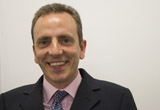 There is a lot to remember when you are leading a ward round. There’s the patient, the relatives, the junior doctors, the nurses, the physiotherapist, the occupational therapist, the pharmacist, the social worker, and the discharge coordinator. There are also the case notes, the drug charts, the observation sheets, the blood tests, the radiology films, and the pathology results. The list goes on and on. And last, but not least, is the medical student. How does the medical student get a chance? And what do medical students expect and want from ward rounds?
There is a lot to remember when you are leading a ward round. There’s the patient, the relatives, the junior doctors, the nurses, the physiotherapist, the occupational therapist, the pharmacist, the social worker, and the discharge coordinator. There are also the case notes, the drug charts, the observation sheets, the blood tests, the radiology films, and the pathology results. The list goes on and on. And last, but not least, is the medical student. How does the medical student get a chance? And what do medical students expect and want from ward rounds?
Merritt and colleagues have done a clever study to answer these questions. They observed doctors doing ward rounds and identified what types of teaching activities were most appreciated by medical students. The answer is that medical students like “patient specific teaching,” “teaching on learner identified topics,” and “real time feedback.”
These activities are easy to list but hard to do—even on ward rounds when there is protected teaching time. The reason is because they are hard to rehearse and they have to be made over on each round. Each patient will have learning points that are particular to them. And each learner will identify different topics and will need feedback that is specific to them. Medical students ask difficult questions and realise when they are being fobbed off. Interestingly, the researchers found that the teaching activity “reviewing specific evidence based medicine literature” was not popular, even though they don’t explain why. Clinicians should be giving evidence based answers to learner identified topics—so why the mismatch?
Could it be that the teachers had problems searching the evidence based literature? Such problems would not be surprising. Over the past five years, there has been a growing recognition of the problems with evidence based medicine. One problem is that the evidence based literature is a poor fit with the patients that you might see on a ward round. For example, your patient might have a number of illnesses, yet studies tend to focus on individuals with single illnesses. So even though the papers that you find are evidence based, they cannot give an evidence based answer about a specific patient.
Even if the patient has a single illness, the outcomes that they might want are often different to those described in the literature. For example, the patient might want to get out of hospital and live independently at home, yet the outcomes described in the literature might be improved laboratory results. But an even bigger problem is the size of the literature and the time it takes to get an answer. A simple search can yield thousands of results and there is no time to read all the papers. This is especially the case on a busy ward round.
So how far away are we from evidence based medicine available where and when clinicians need it? Technology means that we are getting closer. For many, mobile technology means that we have got there already. But the experience on mobile has got to be good—for example, the content must be responsive to the device. Even then a poor WiFi environment might mean that the best content in the world might not get to the user. So an app version of the content is often needed. The content on the app must be continually updated alongside the live version. It is also essential that the app is quick to download. And that it has sophisticated search functionality, including autosuggest options. Then for the context of a busy ward round the content must be practical, actionable, and easy to read. Automatic tracking of searches can also make a real difference. On an average ward round doctors will have many unanswered questions—it is impossible to remember them all. Automatic tracking of searches means that they don’t have to.
Back to the ward round. Over 100 years ago, William Osler popularised the ward round as a place for clinical teaching. If we are to continue his legacy, then we will have to change how we deliver evidence based medicine. Accessibility, apps, and actionable content will become all important.
Kieran Walsh is clinical director of BMJ Learning and BMJ Best Practice. He is responsible for the editorial quality of both products. He has worked in the past as a hospital doctor—specialising in care of the elderly medicine and neurology.
Competing interests: KW works for BMJ, which produces BMJ Best Practice—an evidence based clinical decision support tool.
